Service hotline
+86 0755-83044319
release time:2022-03-17Author source:SlkorBrowse:12170
Hall element is a type of magnetic sensor. They can be used to detect magnetic fields and their changes, and can be used in various fields related to magnetic fields.
Hall elements can be divided into linear Hall elements and switch Hall elements according to their functions. The former outputs analog quantities, and later outputs digital quantities. Linear Hall element has high precision, good linearity and wide temperature range; switch Hall element has no contact, no wear, clear output, no jitter, no bounce, high position repeatability and wide temperature range.
Applications of Linear Hall Elements:
1. Applications of mathematical operators: multiplication, division, reciprocal circuit, square root circuit
2. Application of current measurement: measurement of DC current and AC current
3. Application of voltage measurement: measurement of DC voltage and AC voltage
4. Application of power measurement: measurement of AC power of DC power
5. Application of power factor measurement
6. Measurement of magnetic field: measurement of DC magnetic field and AC magnetic field
7. Measurement of the number of coil turns: the measurement of the number of turns of the Hall zero detection type coil and the measurement of the number of turns of the Hall direct detection type coil
8. Application of asynchronous motor parameters
9. Measurement of coercivity of magnetic materials: measurement of magnetic coercivity and hardness of mechanical parts
Application of Switching Hall Elements
1. Measurement of speed and mileage
2. Application in the measurement of reversible turns of winding machine
3. Flow rate measurement
1. Application of Hall element in displacement, coating (coating) thickness and workpiece thickness measurement
2. Application in ferrous metal detection
3. Application in the measurement of expansion dimension of metal materials
4. Application without damage
5. Application in spot welding current measurement
6. Application in wire rope broken wire detection
7. Application in flow measurement
8. Application in electromagnetic torque measurement of DC motor
9. Application of data fusion in Hall element
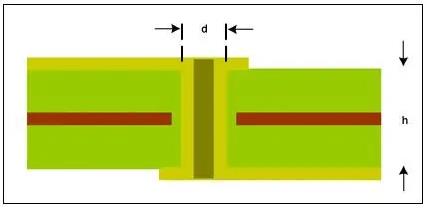
What is a Hall element?
Semiconductor components that are sensitive to magnetic fields can be used to detect magnetic field strength, orientation; can be used to detect DC current, position, etc.
What are the types and models of common Hall elements?
Unipolar Hall
Introduction of single pole switch:
Unipolar Hall effect switches have a magnetic operating threshold (Bop). If the magnetic flux density experienced by the Hall cell is greater than the operating threshold, the output transistor will turn on; when the magnetic flux density falls below the operating threshold (Brp), the transistor will turn on Off. Hysteresis (Bhys) is the difference between two thresholds (Bop-Brp). This built-in hysteresis page enables net switching of the output even in the presence of external mechanical vibration and electrical noise. Unipolar Hall-effect digital output adapts Various logic systems. These devices are ideal for use with simple magnetic rods or rods
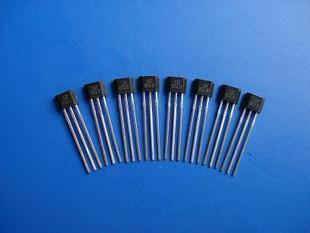
What is a Hall element?
It is a magnetic sensor that can detect magnetic fields and their changes, and can be used in various fields related to magnetic fields.
Applications of Linear Hall Elements:
1. Applications of mathematical operators: multiplication, division, reciprocal circuit, square root circuit
2. Application of current measurement: measurement of DC current and AC current
3. Application of voltage measurement: measurement of DC voltage and AC voltage
4. Application of power measurement: measurement of AC power of DC power
5. Application of power factor measurement
6. Measurement of magnetic field: measurement of DC magnetic field and AC magnetic field
7. Measurement of the number of coil turns: the measurement of the number of turns of the Hall zero detection type coil and the measurement of the number of turns of the Hall direct detection type coil
8. Application of asynchronous motor parameters
9. Measurement of coercive force of magnetic materials: measurement of magnetic coercive force and measurement of hardness of mechanical parts Application of Hall element switches 1. Measurement of speed and mileage 2. Application in measurement of reversible turns of winding machine 3. Measurement of flow rate : 1. Application of Hall element in displacement, coating (coating) thickness and workpiece thickness measurement 2. Application in ferrous metal detection 3. Application in expansion dimension measurement of metal material 4. Application in non-damaged application 5. Application in spot welding welding current measurement 6. Application in wire rope broken wire detection 7. Application in flow measurement 8. Application in electromagnetic torque measurement of DC motor 9. Application of data fusion in Hall element
Hall element is a type of magnetic sensor. They can be used to detect magnetic fields and their changes, and can be used in various fields related to magnetic fields. Hall elements can be divided into linear Hall elements and switch Hall elements according to their functions. The former outputs analog quantities, and later outputs digital quantities. Linear Hall element has high precision, good linearity and wide temperature range; switch Hall element has no contact, no wear, clear output, no jitter, no bounce, high position repeatability and wide temperature range. Hall element A magnetic sensor is a kind of name Hall element 1. The working principle of the Hall element: the so-called Hall effect refers to the lateral potential difference generated when the magnetic field acts on the current-carrying metal conductors and the carriers in the semiconductor physical phenomenon. The Hall effect of metals was discovered by American physicist Hall in 1879. When a current passes through the metal foil, if a magnetic field is applied in the direction perpendicular to the current, a lateral potential difference will appear on both sides of the metal foil. The Hall effect is more pronounced in semiconductors than in metal foils, while ferromagnetic metals exhibit extremely strong Hall effects below the Curie temperature.
A variety of sensors can be designed using the Hall effect. The basic relationship of the Hall potential difference UH is
UH=RHIB/d (18)
RH=1/nq (metal) (19)
In the formula, RH——Hall coefficient:
n - carrier concentration or free electron concentration;
q——electronic power;
I - the current passing through;
B——the magnetic induction intensity perpendicular to I;
d - the thickness of the conductor.
For semiconductors and ferromagnetic metals, the Hall coefficient expression is different from equation (19) and is omitted here.
Since there is a magnetic field around the energized wire, its magnitude is proportional to the current in the wire, so the Hall element can be used to measure the magnetic field to determine the magnitude of the wire current. Using this principle, a Hall current sensor can be designed. The advantage is that it does not make electrical contact with the circuit under test, does not affect the circuit under test, and does not consume the power of the power supply under test, and is especially suitable for high current sensing.
If the Hall element is placed in an electromagnetic field with an electric field strength E and a magnetic field strength H, a current I will be generated in the element, and the Hall potential difference simultaneously generated on the element is proportional to the electric field strength E. The magnetic field strength of the electromagnetic field, the instantaneous value P of the power density of the electromagnetic field can be determined by P=EH.
Using this method, a Hall power sensor can be constructed.
If the switch integrated with the Hall element is regularly arranged on the object according to the predetermined position, when the permanent magnet mounted on the moving object passes through it, the pulse signal can be measured from the measuring circuit. The displacement of the moving object can be sensed according to the pulse signal train. If the number of pulses sent out per unit time is measured, its movement speed can be determined.
Hall elements are semiconductors using the Hall effect.
Second, the characteristics of the Hall element:
1. Hall coefficient (also known as Hall constant) RH
When the magnetic field is not too strong, the Hall potential difference UH is proportional to the product of the excitation current I and the magnetic induction intensity B, and inversely proportional to the thickness δ of the Hall plate, that is, UH =RH*I*B/δ, where RH is called is the Hall coefficient, which indicates the strength of the Hall effect. In addition, RH=μ*ρ, that is, the Hall constant is equal to the product of the resistivity ρ of the Hall plate material and the electron mobility μ.
2. Hall sensitivity KH (also known as Hall product sensitivity)
The Hall sensitivity is proportional to the Hall coefficient and inversely proportional to the thickness δ of the Hall plate, namely KH=RH/δ, which can usually characterize the Hall constant.
3. Hall rated excitation current
The excitation current flowing when the temperature of the Hall element itself rises by 10°C is called the rated excitation current.
4. The maximum allowable excitation current of Hall
The excitation current corresponding to the maximum allowable temperature rise of the Hall element is called the maximum allowable excitation current.
5. Hall input resistance
The resistance value between the Hall excitation electrodes is called the input resistance.
6. Hall output resistance
The resistance value between the Hall output electrodes is called the input resistance.
7. The temperature coefficient of resistance of the Hall element
Under the condition that no magnetic field is applied, when the ambient temperature changes by 1°C, the relative change rate of resistance is expressed by α, and the unit is %/°C.
8. Hall unequal potential (also known as Hall offset zero point)
When there is no external magnetic field and the Hall excitation current is I, the Hall potential difference measured at the output end with no load is called the unequal potential.
9. Hall output voltage
When the external magnetic field and the Hall excitation current are I, the Hall potential difference measured at the output end with no load is called the Hall output voltage.
10. Hall voltage output ratio
Ratio of Hall Inequipotential Potential to Hall Output Potential
11. Hall parasitic DC potential
When the external magnetic field is zero and the Hall element is excited by AC, in addition to the AC anisopotential potential, the output of the Hall electrode also has a DC potential, which is called a parasitic DC potential.
12. Hall unequal potential
In the absence of an external magnetic field and the Hall excitation current of I, the relative change rate of the anisopotential potential when the ambient temperature changes by 1°C.
13. Hall potential temperature coefficient
The relative change rate of the anisopotential potential when the ambient temperature changes by 1°C when the external magnetic field and the Hall excitation current are I. It is also the temperature coefficient of the Hall coefficient.
14. Thermal resistance Rth
When the power consumption of the Hall element increases by 1W, the temperature value raised by the Hall element is called its thermal resistance, which reflects the difficulty of heat dissipation of the element.
The unit is: Celsius/w
Brushless Motor Hall Sensor AH44E
Switched Hall-integrated components for position sensors in brushless motors.
Pin definition (marked side facing itself): (left) power positive; (middle) ground; (right) signal output
Volume (mm): 4.1*3.0*1.5
Pay attention to reduce stress and prevent static electricity during installation

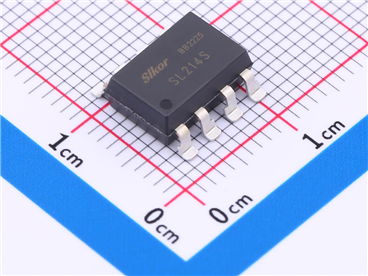
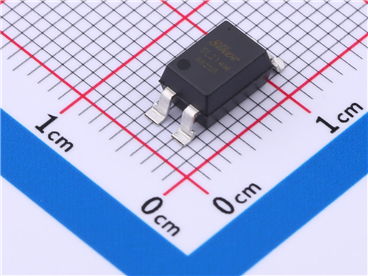
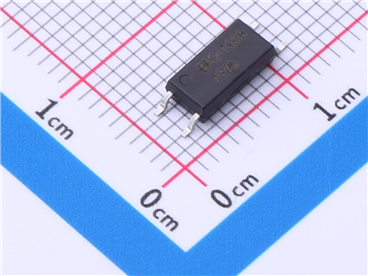
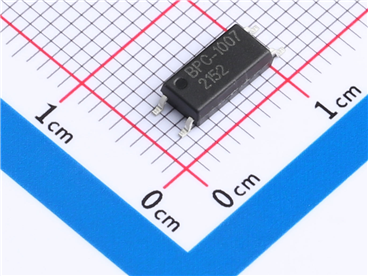


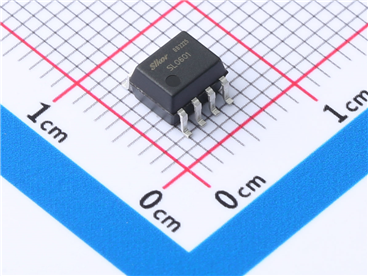

Site Map | 萨科微 | 金航标 | Slkor | Kinghelm
RU | FR | DE | IT | ES | PT | JA | KO | AR | TR | TH | MS | VI | MG | FA | ZH-TW | HR | BG | SD| GD | SN | SM | PS | LB | KY | KU | HAW | CO | AM | UZ | TG | SU | ST | ML | KK | NY | ZU | YO | TE | TA | SO| PA| NE | MN | MI | LA | LO | KM | KN
| JW | IG | HMN | HA | EO | CEB | BS | BN | UR | HT | KA | EU | AZ | HY | YI |MK | IS | BE | CY | GA | SW | SV | AF | FA | TR | TH | MT | HU | GL | ET | NL | DA | CS | FI | EL | HI | NO | PL | RO | CA | TL | IW | LV | ID | LT | SR | SQ | SL | UK
Copyright ©2015-2025 Shenzhen Slkor Micro Semicon Co., Ltd